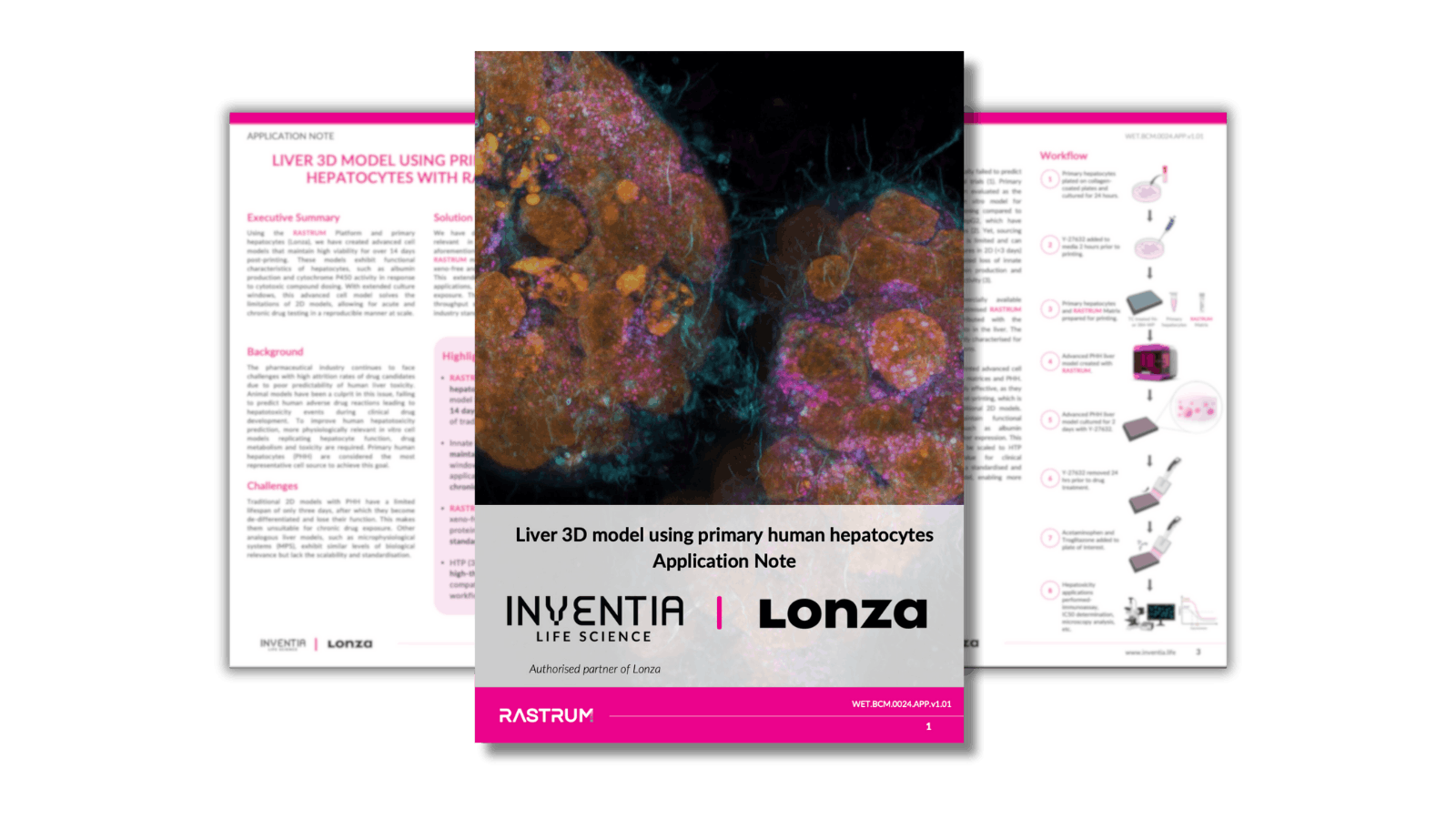
Liver 3D model using primary human hepatocytes
Overview
Inventia Life Science, an authorised partner of Lonza, have created 3D liver cell models with the the RASTRUM™ Platform using Lonza's primary hepatocytes that maintain high viability for an extended period of time while maintaining hepatocyte function. These models exhibit functional characteristics of hepatocytes, such as albumin production and cytochrome P450 activity in response to cytotoxic compound dosing. With extended culture windows, this application shows how RASTRUM™ advanced 3D cell model solves the limitations of 2D models, allowing for acute and chronic drug testing in a reproducible manner at scale.
Highlights
In this application note, you will discover:
- RASTRUM™ can print primary hepatocytes to create an advanced 3D liver model that maintains viability for over 14 days, extending the limited lifespan of traditional 2D cultures.
- Innate hepatocyte function is preserved throughout the extended assay window, enabling various applications, including acute and chronic drug exposure.
- RASTRUM™ Matrices are synthetic, xeno-free, decorated with liver ECM proteins and peptides, enabling a standardised and reproducible model.
- The high-throughput (384-well plate) format facilitates high-throughput screening and seamlessly integrates with industry-standard workflows.
3D LIVER MODEL USING PRIMARY HEPATOCYTES APPLICATION NOTE
Tags:
Application Resources